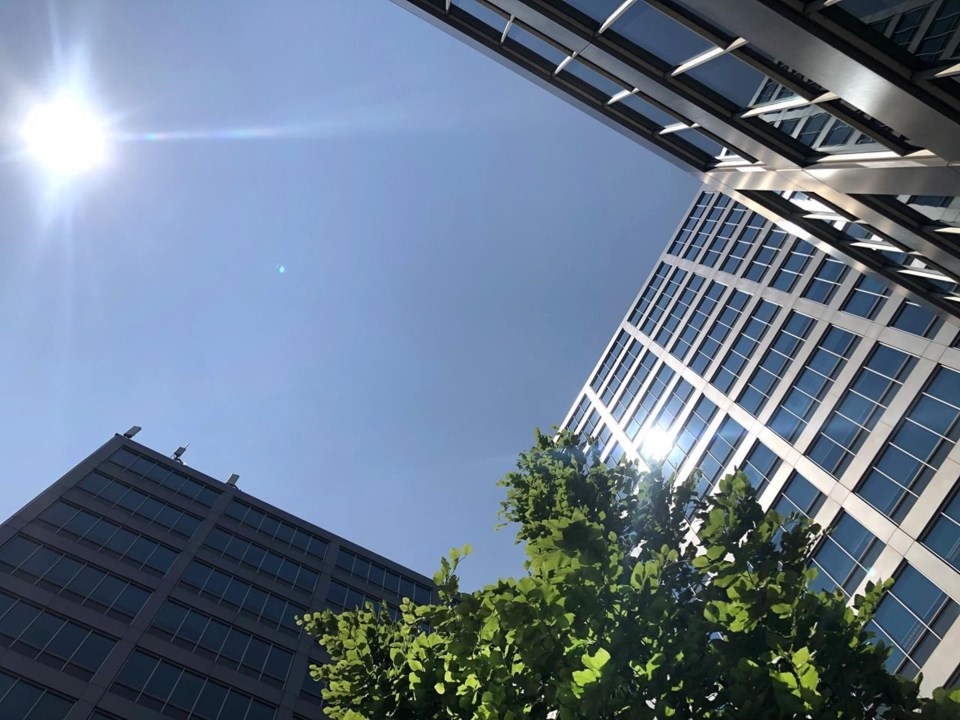Wildfire smoke hanging over communities across Canada in recent months has highlighted the need for better ventilation in buildings used by the public, experts say, urging the establishment of strong indoor air quality standards.
Health concerns over smoke from forest fires were pushed to the forefront this week after a nine-year-old boy in British Columbia died from asthma exacerbated by wildfire smoke.
Experts say current air quality recommendations for public spaces are not sufficient to prevent small particulate matter, including pollutants in smoke, from circulating indoors.
As wildfires are expected to grow in the coming years – estimates have said they will increase 25 per cent by 2030 – thinking about how to make indoor air safer to breathe is paramount, experts say.
"Particulate matter, fine particles in the air – smoke being one of them – is by far the most harmful pollutant and what causes the most damage to public health," said Joey Fox, an HVAC engineer and chair of the indoor air quality advisory group for the Ontario Society of Professional Engineers.
Regulations on air quality vary across federal and provincial jurisdictions but none mandate the use of high efficiency particulate air – or HEPA – filters, or those that have a minimum efficiency reporting value of 13 – termed MERV-13 – or higher.
Many organizations are opting to improve their ventilation systems, but Fox believes high-quality filters should be a requirement, not a suggestion.
"Buildings have been making us sick," he said. "Using filters that help protect people is really something that we need to do moving forward."
Studies show that poor indoor air quality in office buildings and schools has been linked to increased health issues, absenteeism, loss of productivity and strained relations between employees and employers, according to the Canadian Centre for Occupational Health and Safety.
Health Canada recommends that public buildings and institutions install mechanical HVAC systems capable of being equipped with a MERV-13 filter or higher to remove fine particulate matter, but it is not legally required.
School districts across Canada have been investing in improving air quality in classrooms to prevent communicable illnesses, particularly since the COVID-19 pandemic hit, but standards and recommendations vary.
In Ontario, school boards are "expected" to utilize MERV-13 filters for schools with mechanical ventilation.
In B.C., it’s recommended that school districts "regularly maintain HVAC systems" and open windows where possible. The province says it spent $2.5 million to install 1,914 standalone filtration HEPA units in classrooms that had no mechanical ventilation.
Stéphane Bilodeau, an indoor ventilation expert and lecturer in the bioengineering department at McGill University, said it's time to move beyond suggestions for indoor air quality.
"There should be a bit more than just recommendation as it’s not just affecting people but society,” Bilodeau said.
“If you let a large amount of people be impacted by their health, then it will definitely come down to the health-care system in some ways down the road.”
Most building codes in Canada use what's known as the ASHRAE Standard 62.1 to quantify the level of ventilation and indoor air quality that’s acceptable for humans.
The standards recommend a minimum level of filtration at MERV-8, but while that is effective for preventing dust and some air pollution, experts say it is not enough to keep out extreme pollutants such as wildfire smoke.
"The standards for new buildings in Canada are still relying on filtration which is not high efficiency filtration ... so that's where the problem is,” said Bilodeau.
Jeffrey Siegel, a professor of civil engineering at the University of Toronto, said there has been a lack of messaging from public health officials over the benefits of improving air quality.
"For most Canadians, what we breathe in indoor air is our dominant environmental health risk," he said.
"If you improve indoor air quality, you will see better health outcomes, but we haven't done a good job in getting that message out."
This report by The Canadian Press was first published July 21, 2023.
William Eltherington, The Canadian Press




